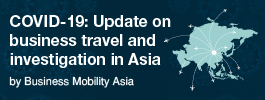Why wealth categories matter

Whether self-made, inherited, or both, individuals and families with substantial fortunes get categorised according to their wealth within the financial industry
- Wealth classification based on liquid assets
- About 25,490 persons have fortunes worth $100 million or more
- Nuanced wealth categorisation accurately represents financial position
Net wealth levels are categorised into high-net-worth (HNW), very-high-net-worth (VHNW), and ultra-high-net-worth (UHNW) individuals or families, centi-millionaires, rich, super rich, and ultra-rich, including billionaires, for the ones above the billion-mark.
Wealth classification for individuals based on liquid assets
The wealth categories for high-net-worth individuals (HNWI) may vary across different regions, and between banks, wealth management institutions, and reporting firms. HNWI typically hold between $1 million and $5 million, or simply over $1 million in liquid assets.
TAB Insights’ Global Private Wealth Management Market Outlook 2023, defines HNWI as people with wealth exceeding $1 million, or as similarly mentioned in Capgemini’s World Wealth Report 2022. The VHNWI have $5 million to $30 million in investable assets, according to WealthX’s Very-High-Net-Worth Handbook 2021. All these figures usually get equally translated and counted in USD, GBP, and Euro across countries in the industry.
The wealth segment criterion of UHNWI vary across industry reports, with some firms referring to individuals with $30 million or more, other companies calculating with at least $50 million, and a third categorisation using $100 million or more to refer to them. Investopedia defines UHNWI as people with a net worth of at least $30 million. They use Knight Frank's definition that suggests it applies to individuals with at least $30 million in investable assets. Capgemini’s World Wealth Report 2022 also includes individuals with more than $30 million in liquid assets.
The Global Private Wealth Management Market Outlook 2023 refers to UHNWI with wealth over $50 million. Credit Suisse also defines UHNWI as adults with wealth above $50 million. According to the Credit Suisse Global Wealth Databook 2022, 53% of the world’s UHNWI live in the United States, and that even though China and India are expected to see strong growth in their wealthy populations, they still have a long way to go before catching up with the US. Campden Wealth refers to UHNWI as those with a net wealth of at least $100 million, andfocus on individuals belonging to business-owning or legacy families, as well as UHNW private investors. UBS uses $100 million in UHNWI segmentation, according to the UBS Evidence Lab report. Boston Consulting Group defines UHNW as those with more than $100 million in liquid financial wealth and refers to the original $30 million criterion created in 2007.
About 25,490 persons have fortunes worth $100 million or more
New World Wealth’s Centi-Millionaire Report (2022), commissioned by Henley & Partners, refers to UHNWI, as those whose wallets bulge with over $100 million in investable assets. The report reveals that there are 25,490 centi-millionaires around the world, with 9,730, or 38%, living in the US. China is second with 2,021, followed by India with 1,132 (third), the UK, with 968 centi-millionaires (fourth), Germany with 966 (fifth), and Switzerland with 808 centi-millionaires (sixth).
Top cities for centi-millionaires are New York with 737, San Francisco and the Bay Area with 623, and London with 406. The number of this class of rich has more than doubled over the past 20 years, with Vietnam, India and Mauritius expected to be the fastest- growing markets for centi-millionaires over the next decade, until 2032.
Wealth categorisation and segmentation hold different significance for the wealthy and their advisors, practitioners, providers, and communities. Being in an elevated wealth class holds prestige and offers access to coveted private and public tables, services, and beyond. It is a mark of power, influence, and impact to shape things that matter to the wealthy. The names and affiliations of the wealthy carry weight for their family members and communities and make a difference in the experiences, attention, respect, care, and privileges they receive. It also substantially decreases the amount of time it takes for them to achieve this level in society.
Wealth brackets have higher influence, and connected risk factors too. For the wealthy, thresholds also serve for benchmarking and differentiation purposes, ensuring optimal services according to their wealth level. Knowing the specific segments help set realistic goals, such as family members’ lifestyles and legacy. Being aware of one’s wealth level helps them make informed decisions about family, business, and investment, risk mitigation and emergency preparedness. Estate planning and philanthropic endeavours offer different perspectives on the wealthy, as they grow or decrease wealth through major donations.
Although many of the ultra-wealthy would still rather keep what they own private, a few affluent individuals boast about their financial metrics, may even claim to be worth more than reported to gain more respect, and seek service level upgrades. Some are obsessed with benchmarking against their peers and checking their wealth levels.
Private bankers, advisers, practitioners, and providers, including commercial multi-family offices use classification grades as a point of initial reference for optimising services for the affluent. They can ‘tier’ their clients based on their wealth, benchmark services against competitors and strengthen relationships. Advising wealthy clients to review or revise current categorisations to achieve their goals while leveraging all available opportunities can benefit both parties.
The number of single and private multi-family offices has been skyrocketing around the world, benefiting from analysis points on ultra-wealthy with $100 million threshold. However, such findings may no longer represent them entirely due to the viability check exercises behind establishing single family offices.
Around 10 to 15 years ago, the minimum amount with which the ultra-wealthy could consider creating an Single Family Offices (SFO) was around $100 million, which has since increased to around $250 million in net wealth. Advising any UHNWI or families on the lower spectrum to set up an SFO can be misleading, leaving clients disillusioned about its long-term sustainability. Hence came a further surge in the family office reports to offer dedicated insights into these entities serving the ultra-wealthy, such as the Global Family Office Report by Campden Wealth and UBS.
These reports draw a line between findings from Single Family Offices (SFO), Private Multi Family Offices (PMFO), and Commercial Multi Family Offices (CMFO) with a predominant focus on SFO. Some family office reports such as the Goldman Sachs Family Office Investment Insights report Eyes on the Horizon, emphasise the size and nature of the family offices, without specifying whether they refer to SFO, PMFO or CMFO or the regions in which these reside.
Depending on their goals, expectations, family settings, and activities, as well as their resources, clients may opt to set up an SFO that could serve the individual and family regarding their philanthropic, family governance, succession, legacy, and next-generation engagement and education-related endeavours, beyond the financial, legal, tax, estate-planning and related services. They can also team up with other individuals and families to create a PMFO or join a CMFO for institutional services.
Nuanced wealth categorisation accurately represents individual's financial position
The affluent require all-important contextual considerations and colouring such as family members, age groups, commercially lucrative entities, trusts and investment structures. These factors provide layers to an individual’s net worth and the types and levels of services they require.
Further differentiators include their extended, scaled, and sophisticated activities. High-growth entrepreneurs may pass wealth level thresholds at a fast pace, but their business and cultural sophistication may differ from those with decades of experience, and they could meaningfully embed themselves into their contextual surroundings, including their preferred lifestyle and beyond.
The complexity of net-worth categorisations indicates significant differences, prompting further specification, recalibration or introducing new terms, for example, for individuals with $500 million in net assets.
Reports that offer contextualised and congruent analysis prevent false assumptions and hurdles for practitioners and clients trying to make sense of their ever-changing wealth landscape, and help them harness and recalibrate the opportunities offered by their wealth.
Zita Nikoletta Verbényi is the founder and legacy aesthete at The Legacy Atelier™, and she also sits on Wealth & Society’s Global Advisory Board.
Keywords: High-net-worth, Wealth, Centi-millionaires, Categorisation, Very-high-net-worth, Legacy Planning, Investment, Estate Planning, Taxation
Institution: Capgemini, WealthX, Credit Suisse, UBS, Henley & Partner’s, Goldman Sachs, Investopedia
Country: US, UK, India, China, Switzerland, Vietnam.
People: Zita Nikoletta Verbényi












Leave your Comments